
Choosing the right fabric can make a huge difference in how your clothes feel, perform, and last. The comparison of lycra vs polyester comes up often, especially when picking activewear, swimwear, or everyday staples.
This guide walks through what each fabric really offers—stretch, durability, moisture handling, and comfort—so you can pick the one that actually works for how you live, move, and wear your clothes.
Understanding Lycra and Polyester
Lycra
Lycra, also called spandex or elastane, is all about stretch. It is made by spinning long chains of synthetic polymers, which gives it that extreme elasticity.
Lycra can expand up to five times its original size, so it moves with you rather than against you. This is why it's common in activewear, swimwear, and leggings.
Most of the time, it's blended with other fabrics for extra durability and comfort. One thing to note: avoid high heat when washing or ironing, or the fabric can lose elasticity.
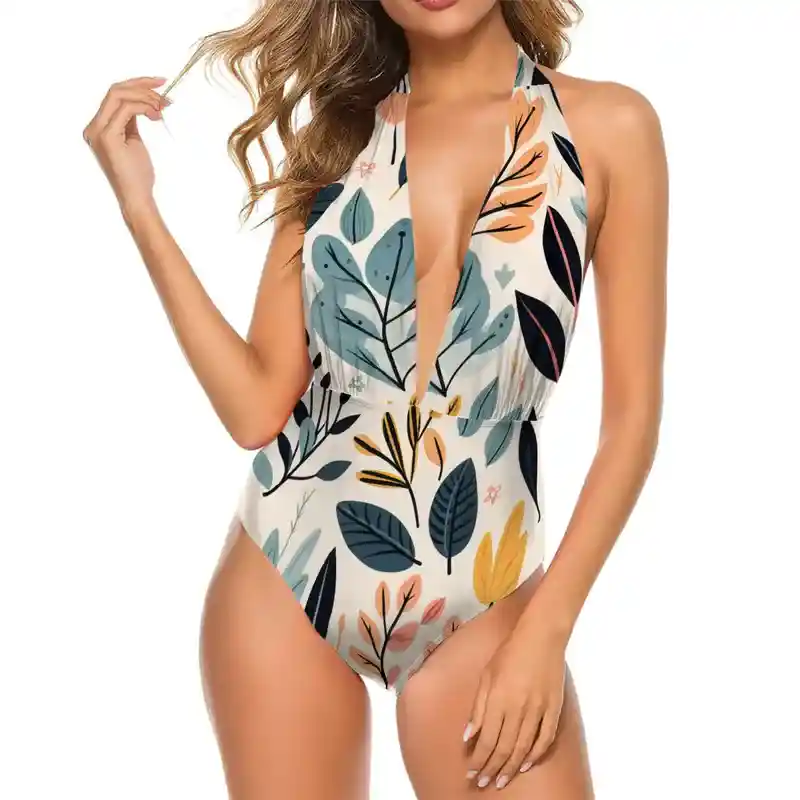
Custom Deep V One Piece Swimsuit Women Customized Services - Print-On-Demand - PrintKK
Polyester
Polyester is a workhorse for everyday wear. It is made from polyethylene terephthalate (PET) through a chemical polymerization process, which produces strong, long-lasting fibers.
Polyester is durable, resists wrinkles and shrinking, and retains color well, keeping clothes looking consistent over time. It can be used alone or blended with cotton to soften the feel.
Unlike Lycra, it doesn't stretch much, so it works better for clothing where movement isn't the priority.
Polyester repels moisture but is less breathable, which can make it feel warmer during heavy activity.
Knowing how these fabrics are made helps you understand why they behave the way they do.
Choose Lycra when you need stretch and flexibility, and Polyester when durability, low maintenance, and color retention matter most.
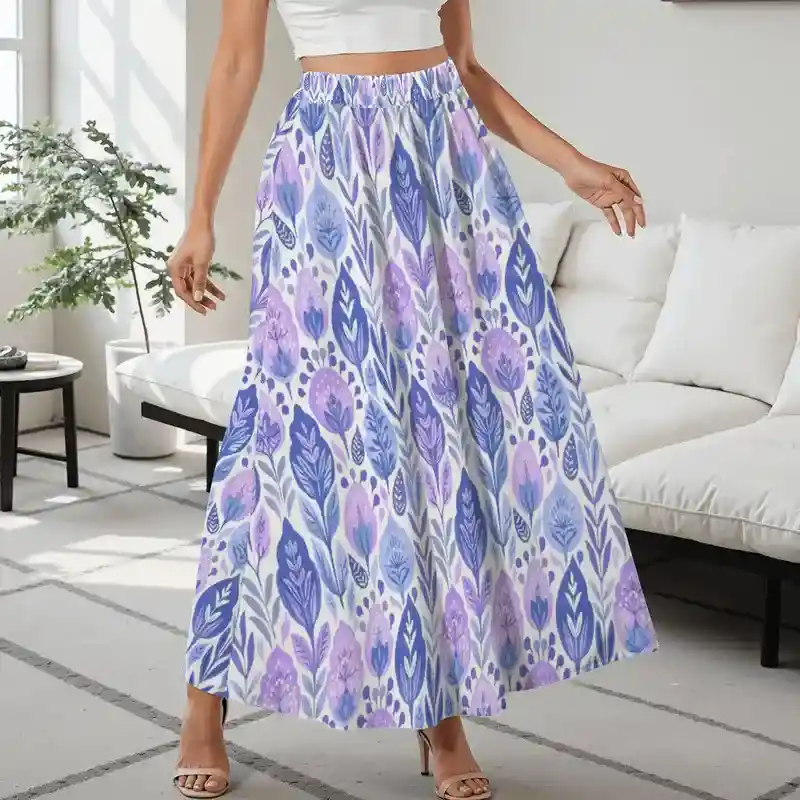
Print on Demand Midi Skirt with Pockets - Women's Clothing - PrintKK
Lycra vs Polyester: Full Comparison
Stretch and Fit
Lycra
Lycra is known for its exceptional stretch. It moves with your body and returns to its original shape, so you don't feel restricted.
This is why leggings, cycling shorts, and swimwear often include Lycra. Even in tight sports tops, Lycra allows you to reach, bend, and twist comfortably.
If you try a yoga pose or sprint, the fabric adapts without sagging or bunching.

Polyester
Polyester is not as stretchy as Lycra, so it holds its shape rather than conforming closely to your body.
This makes it ideal for jackets, pants, or outerwear that need structure and durability. For example, hiking jackets often use polyester because it maintains its form after layering or packing.
You won't get the same body-hugging fit, but it keeps garments looking crisp over time.
Durability and Care
Lycra
Lycra can lose elasticity if exposed to heat or harsh detergents. You need to wash it gently and avoid tumble drying on high heat.
It resists tearing under normal use, but repeated stretching in leggings or athletic tops can weaken the fibers over months. Many athletes order multiple Lycra items to rotate, keeping performance consistent.
Polyester
Polyester is strong, long-lasting, and easy to care for. It withstands rough washing, retains color, and resists shrinking.
This makes it ideal for work shirts, casual jackets, and sports uniforms that see frequent use. Low maintenance is a key advantage—you can wash it repeatedly without worrying about stretching or damage.
Polyester does absorb some odors, but its quick-drying property helps you wear it again sooner than cotton.
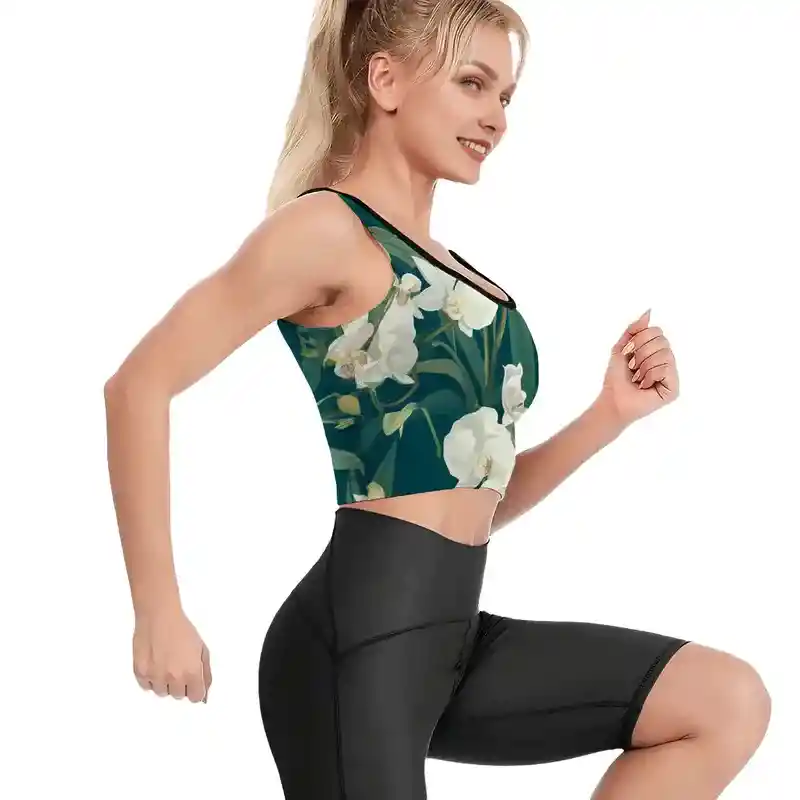
Custom Printed on Demand Yoga Strappy Sports Bra Top (AOP) - PrintKK
Comfort and Performance
Lycra
Lycra feels soft and smooth against your skin. It is lightweight, breathable, and reduces friction during movement, making it ideal for activewear.
For example, runners often choose Lycra shorts or tights because chafing is minimized and movement is unhindered. Even under multiple layers, Lycra keeps you comfortable without adding bulk.
Polyester
Polyester is slightly stiffer but still comfortable in most clothing. It wicks moisture efficiently, helping shirts, jackets, or base layers dry faster.
For instance, hiking shirts made of polyester pull sweat away from your skin, keeping you drier during long treks.
Polyester also performs well in colder weather when layered because it retains warmth without being heavy.
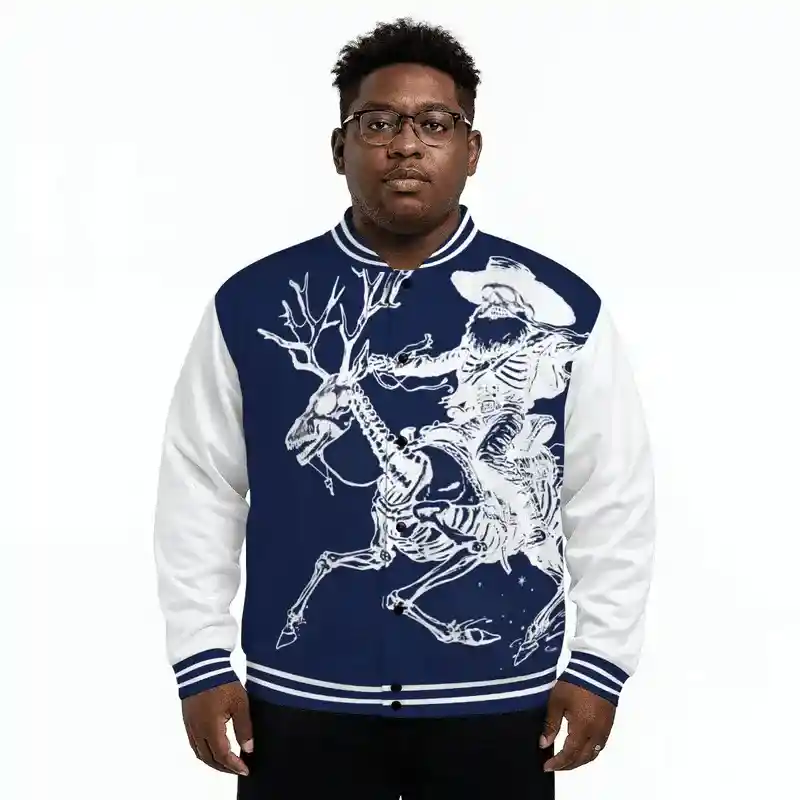
Print On Demand Button-up Baseball Jacket - PrintKK
Cost and Availability
Lycra
Lycra is generally more expensive and is often blended with cotton or polyester to reduce cost while keeping stretch properties.
You'll see it in performance wear, swimwear, or leggings. Pure Lycra garments are less common because of price, but the investment is worth it for active clothing that needs to move with your body.
Polyester
Polyester is cheaper and widely available in many garments. It is used in everyday t-shirts, jackets, pants, and even bedding.
Its affordability and durability make it practical when you need clothes that last and perform well under frequent use. Many brands combine polyester with Lycra to balance stretch and strength.

Custom Women's Beach Shorts - Print-On-Demand - PrintKK
Polyester Lycra vs Nylon Lycra: Uses in Daily Life
Melting Point
- Polyester Lycra: The melting point is around 255℃, determined by polyester. This makes it stable for everyday clothes and workout gear.
- Nylon Lycra: The melting point depends on the type of nylon. Nylon 6 melts at 210–220℃, while Nylon 66 melts around 255℃. It is suitable for outdoor or high-performance garments.
Color Fastness
- Polyester Lycra: Uses disperse dyes at high temperatures (130℃+), which gives excellent wash, sunlight, and abrasion resistance. Your leggings or sports shirts keep color longer.
- Nylon Lycra: Uses acid dyes at lower temperatures (~100℃), so color may fade faster. Special treatments can improve it, making it ideal for swimwear or premium activewear.
Elasticity and Recovery
- Polyester Lycra: Has good stretch but the rebound is slightly lower. Works well for casual leggings or workout tops that need some flexibility.
- Nylon Lycra: Higher recovery keeps clothes from sagging. Perfect for compression gear, swimsuits, or tight athletic wear.
Durability and Abrasion Resistance
- Polyester Lycra: Durable enough for everyday wear and regular workouts. Holds shape even after multiple washes.
- Nylon Lycra: More abrasion-resistant, ideal for outdoor clothing, sports gear, and items that see heavy use.
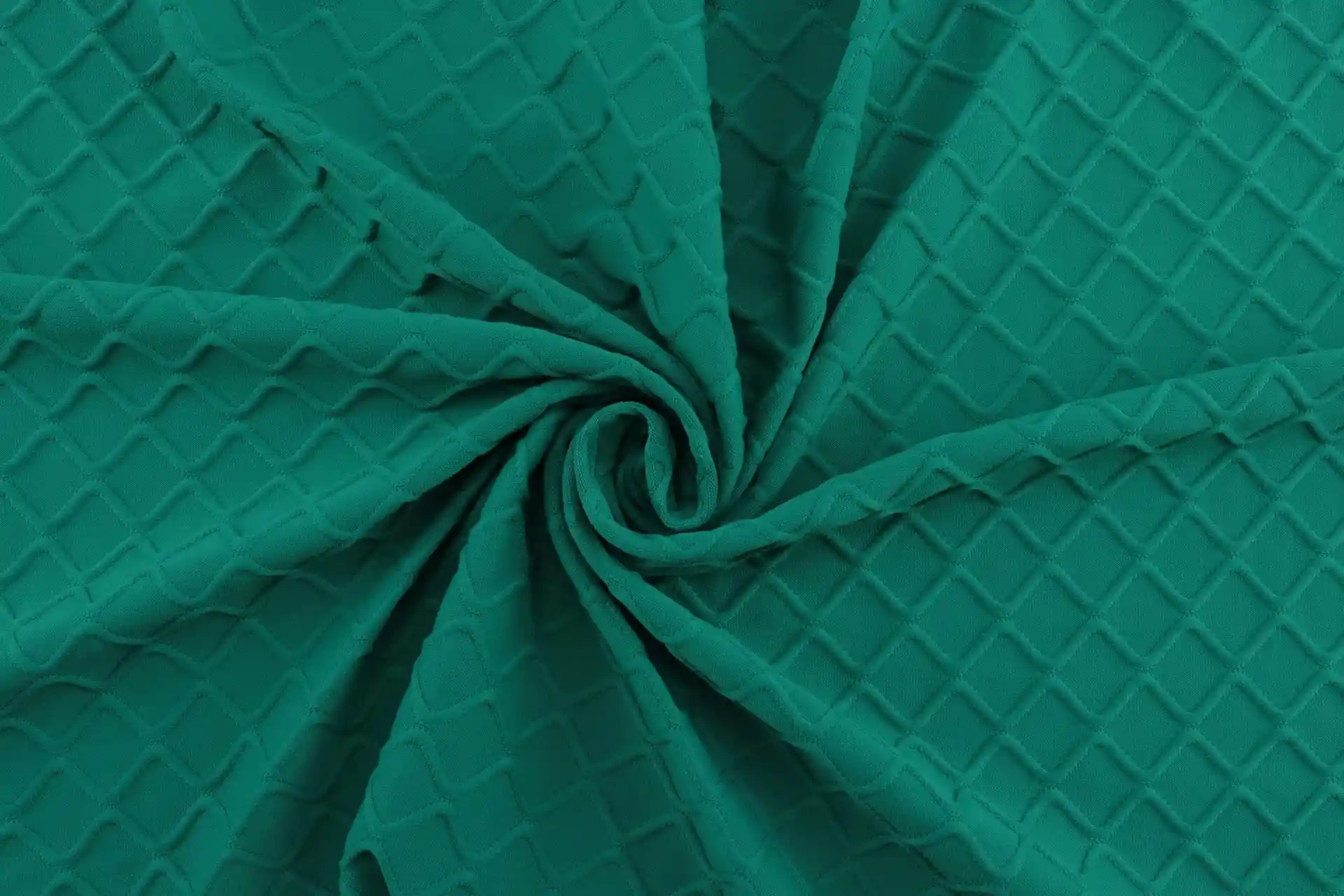
Hand Feel and Gloss
- Polyester Lycra: Slightly rougher and less shiny. Works well for casual tops, hoodies, or fleece-lined clothes.
- Nylon Lycra: Smooth and glossy, giving a silk-like look. Often chosen for high-end activewear or swimwear.
Moisture Absorption
- Polyester Lycra: Low absorption, can feel warm when worn for long periods.
- Nylon Lycra: Absorbs moisture better, more comfortable for active or hot conditions.
Price and Applications
- Polyester Lycra: More affordable, great for everyday clothes and standard sportswear.
- Nylon Lycra: Pricier, used for high-performance, outdoor, or swimwear where performance matters.
Read More:
Choosing Swimwear Fabrics: Lycra vs Polyester vs Nylon
DuPont Lycra
Lycra stretches 4–6 times its original length, giving swimsuits a smooth fit that moves with your body. It resists wrinkles and keeps its shape well.
Lycra also handles chlorine better than other fabrics, lasting about 50% longer. This makes it a solid choice for one-piece suits, high-coverage styles, or any water activity where you need your suit to stay supportive and durable.
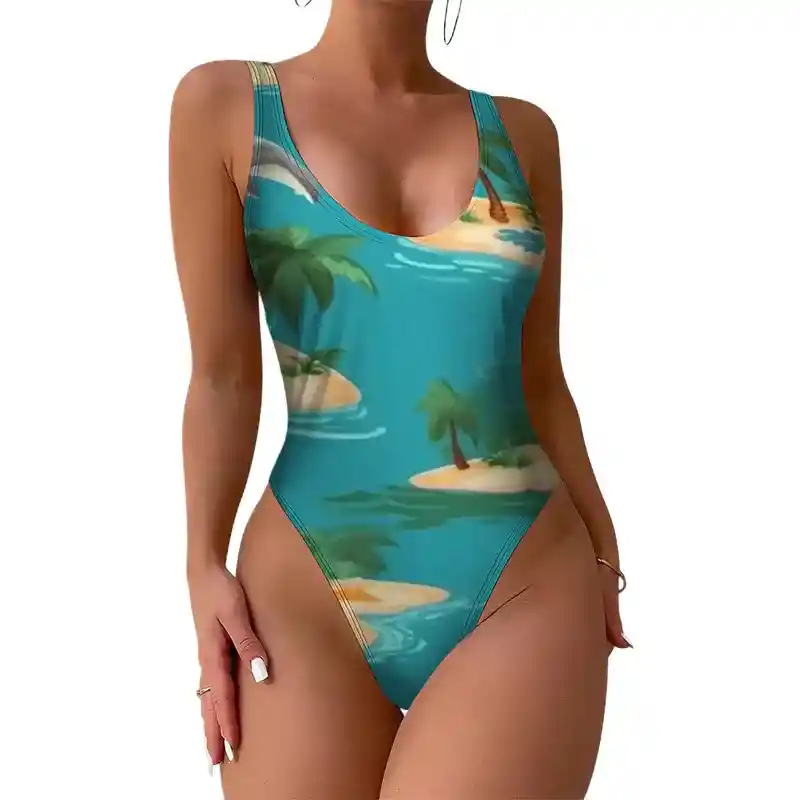
Print on Demand High-Cut One Piece Swimsuit Women Customized Services - Women's Clothing - PrintKK
Nylon
Nylon is soft and flexible, offering comfort similar to Lycra but without the same firm stretch. It absorbs very little water, so it dries quickly after a swim.
Nylon works well for mid-range swimwear or budget-friendly pieces, giving you comfort and quick-drying performance without a high price tag.
Polyester
Polyester stretches less than Lycra or nylon, so it's often used in swim trunks or two-piece swimsuits rather than one-piece styles.
Its real advantage is UV and chlorine resistance, making it ideal for outdoor swims or long exposure to sun and pool water.
It's also a practical option for low-cost swimwear that needs to hold up over time.
Swimwear Care Tips
- Hand wash in cold or lukewarm water and avoid bleach or brightening detergents.
- Air dry in the shade; high heat can damage elasticity.
- Rinse with clean water before swimming to protect the fabric from chlorine.
- Apply sunscreen after putting on your suit to limit chemical contact.
- Don't fold or store in plastic bags for long periods to avoid mold or deformation.
- Avoid rubbing against rough surfaces to prevent pilling or tears.
- Skip wearing swimsuits in hot springs or saunas; heat and sulfur can weaken elastic fibers.
How to Identify Nylon and Polyester Fabrics
Feel and Look
Nylon is usually softer, smoother, and has a slightly slippery texture, while polyester feels a bit stiffer and more structured.
Shine can also help—nylon has a glossier surface, whereas polyester looks more matte.
Stretch is another clue: nylon stretches more easily and recovers quickly, while polyester stretches less and retains its shape without much bounce.
Moisture and Oil Response
Nylon absorbs a small amount of water, so it can feel slightly damp when wet, whereas polyester repels water and dries quickly.
Polyester, however, attracts oils and may hold onto body oils or sweat odor over time, while nylon resists them better.
Observing how the fabric reacts to moisture or sweat can give you a strong hint about its type.
Durability and Weave
Nylon is generally stronger and resists tearing better, with tightly held yarns that improve abrasion resistance.
Polyester is also durable but maintains its shape well even when wet.
Over time, polyester tends to resist UV fading better than nylon, making it a preferred choice for outdoor garments or gear exposed to sunlight.
Expert Tips
Choosing the right fabric depends on what you need. Lycra vs polyester each has clear strengths.
Lycra gives you excellent stretch and comfort. It moves with your body and keeps its shape. Polyester is durable and holds color well. It resists wear and dries quickly.
Understanding their differences helps you make smarter choices. You can enjoy clothes that perform and feel just right.
FAQs
Is Lycra made from polyester?
Lycra is not the same as polyester. It is a type of synthetic fiber called spandex, known for its stretch. Sometimes it is blended with polyester, but pure Lycra itself is different.
Is Lycra good for skin?
Yes, Lycra is gentle on skin. It stretches without causing chafing and usually fits snugly. Breathable versions can keep you comfortable, making it suitable for everyday wear or active clothing.
Can Lycra be worn in winter?
Lycra can be worn in winter when layered. It traps some warmth close to your body and moves easily with you. Pairing it with thicker fabrics helps retain heat in cold weather.
Is Lycra better than cotton?
Lycra and cotton serve different purposes. Lycra stretches and keeps its shape, while cotton is soft and breathable. For fitted or active garments, Lycra works well, but cotton feels naturally comfortable for casual wear.










 Global Shipping
Global Shipping





























